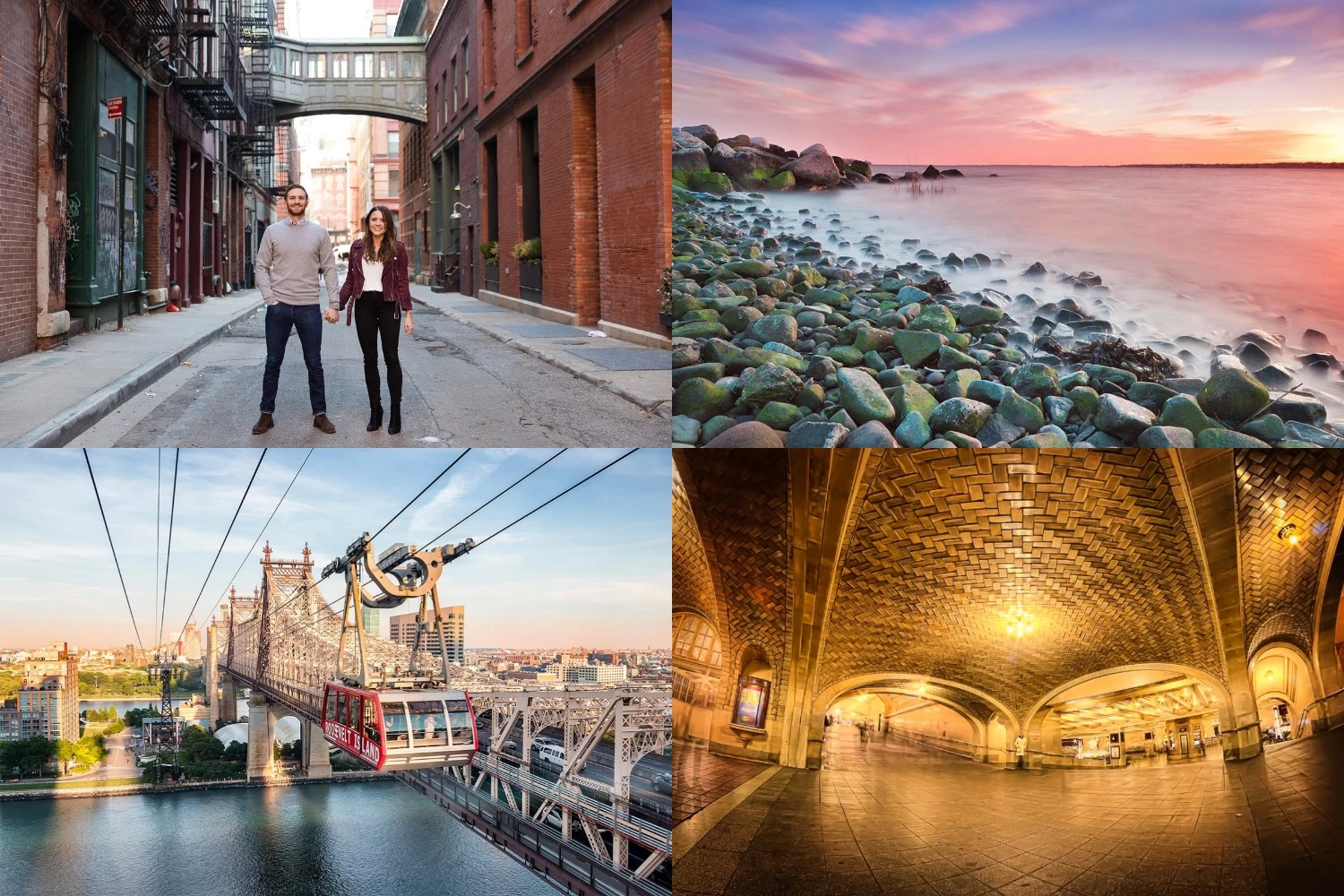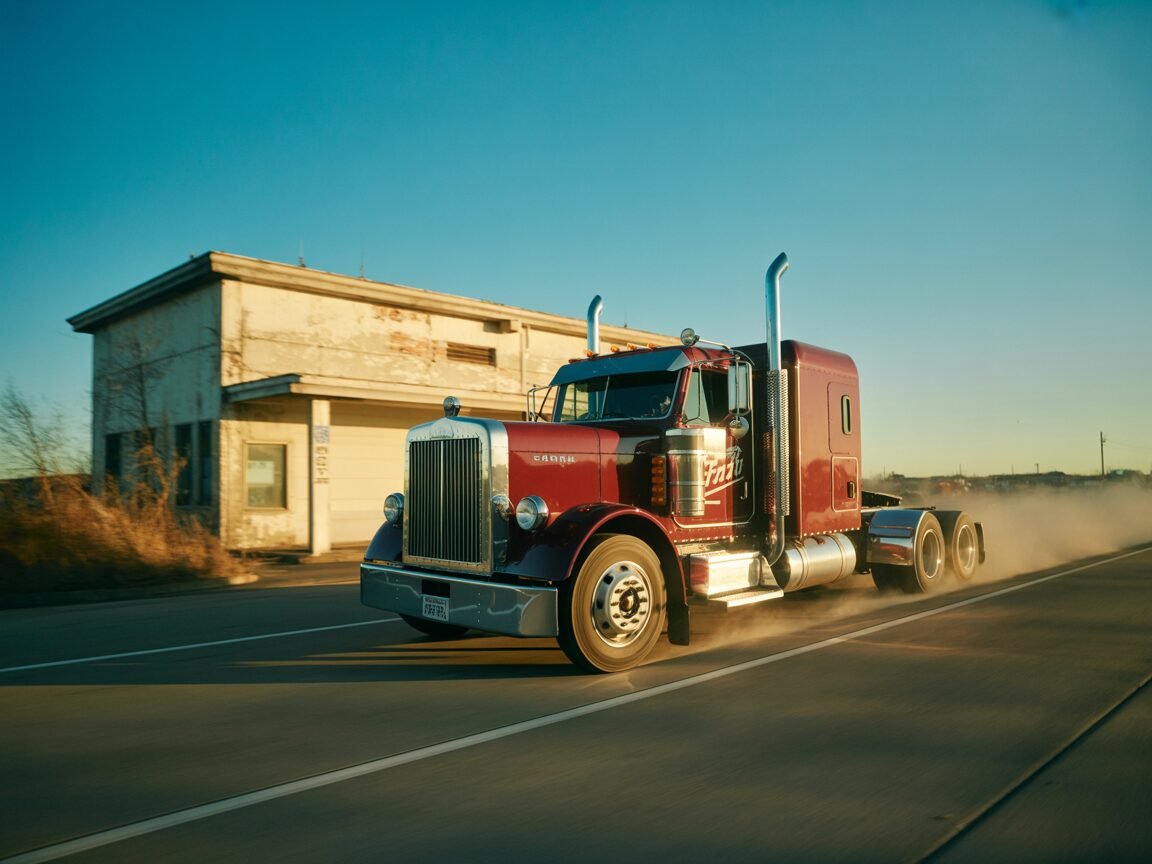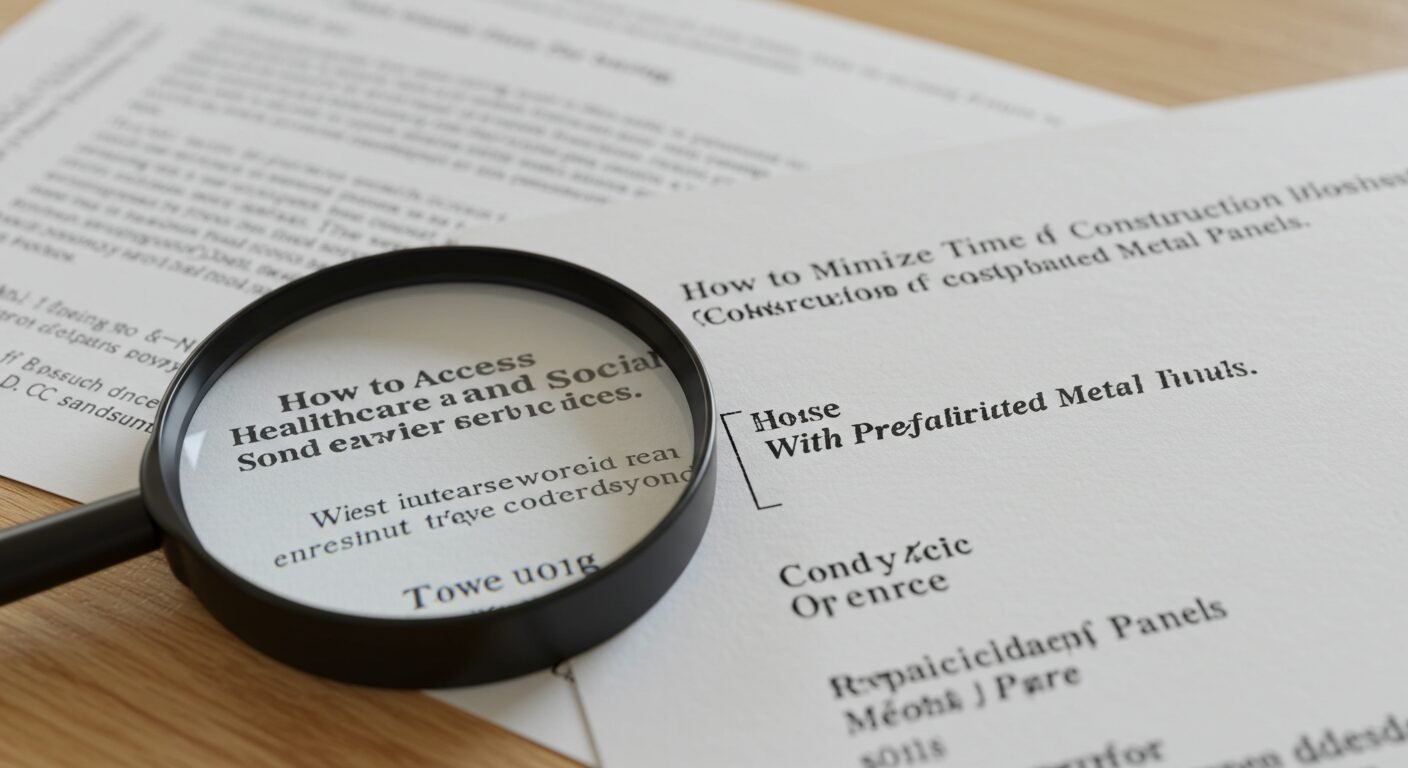Others
New York in the Frame – Photo Spots

New York City isn’t just a destination — it’s a dream suspended in time, a rhythm, a heartbeat. It’s the city where moments crystallize into magic, especially when seen through a camera lens. Whether you’re an aspiring Instagrammer, a seasoned photographer, or a traveler craving unforgettable memories, NYC offers endless photo opportunities that feel like scenes from a movie.
“In New York, every corner tells a story. All you have to do is frame it.”
Let’s step into the most photogenic corners of the city, from classic backdrops to hidden gems, and discover how to make your New York photo album truly legendary.
Central Park: Nature Meets Urban Romance
No list of magical photo spots in New York is complete without Central Park — the green heart of Manhattan. With its ever-changing seasons, charming bridges, and skyline views, it’s the perfect blend of nature and city.
There’s something cinematic in the way the sun filters through the trees, or how the skyline peeks between branches like a whispered secret. Autumn brings a firework of colors, while winter coats the landscape in soft white nostalgia. Every inch of Central Park feels like a story waiting to be told — and captured.
For photography groups or travelers arriving as a crew, getting to Central Park in style and comfort is part of the journey. If you’re traveling with a group, consider a convenient and spacious option like a Bus Rental 18 passenger in New York — the perfect way to move through the city without missing a moment of magic. Find out more.
It’s not just the iconic spots — even the lesser-known corners, like the Shakespeare Garden or the secluded Ramble, offer frames filled with intimacy and wonder. Snow-dusted benches, lovers on rowboats, children chasing bubbles — Central Park doesn’t just offer views. It offers feelings.
Best photo spots in Central Park
- Bow Bridge
An iconic, romantic arch stretching over the water — come at golden hour for that soft, cinematic glow. - Bethesda Terrace & Fountain
A fairytale setting complete with angelic statues, reflections in the water, and musicians creating a timeless soundtrack. - The Mall
Tree-lined paths that become tunnels of light in the fall — a natural aisle made for slow walks and stunning portraits.
“Central Park is a living painting — you just have to step into the frame.”
DUMBO: The Brooklyn Bridge Dream Shot
There’s a reason Down Under the Manhattan Bridge Overpass (aka DUMBO) is always on New York photo guides. The cobblestone streets, red-brick buildings, and perfect alignment with the Manhattan Bridge create a view that feels straight out of a dream.
This neighborhood pulses with creativity — from street performers to artists sketching riverside scenes. The blend of historic charm and raw industrial edges makes it the kind of place where every click of your camera feels electric. It’s New York in its most stylish frame.
In DUMBO, even the puddles reflect beauty — turning raindrops into light shows. At night, the bridge transforms into a glowing spine across the East River, and with every ferry that passes, you catch a flicker of something cinematic. It’s where Brooklyn winks at Manhattan, and the skyline responds with glitter.
Why photographers love DUMBO
- The Washington Street shot
A postcard-perfect alignment of buildings, bridge, and the Empire State peeking in the background. - Pebble Beach
Rocks, skyline, and serenity — especially beautiful at sunrise with fewer crowds. - Jane’s Carousel
A glass-box carousel with Manhattan twinkling behind it. Pure whimsy.

The High Line: Elevated Perspectives
This elevated park, built on a historic rail line, is a photographer’s playground. It winds through buildings, offers urban art, gardens, and killer views of the Hudson.
Walking the High Line feels like stepping between two worlds — one of industrial grit, and one of blooming softness. It’s where wildflowers and steel beams live side-by-side, and where the city’s pulse slows just enough for you to catch your breath and snap something magical.
There’s poetry in its curves — in the way ivy creeps along the rails, in how street noise fades behind walls of green. From the overlook near 10th Avenue to the occasional glimpse into apartment windows (with their own stories behind the glass), it’s a moving stage of urban theater. Every few steps gives you a new composition.
What makes the High Line photo-worthy
- Framed cityscapes
Industrial textures mixed with greenery and glass buildings. - Street art murals
Perfect for vibrant, edgy shots with New York attitude. - Sunset moments
Catch the golden light spilling between buildings — it’s like the city’s blushing just for your camera.
“The High Line isn’t just a park — it’s an open-air gallery with the city as your canvas.”
Top of the Rock: The Ultimate Skyline
Want that shot of the Empire State Building? Head to the Top of the Rock at Rockefeller Center. It’s arguably the best place to capture the entire Manhattan skyline.
From up here, the city reveals its poetry — grids of light, towers that pierce the clouds, and an energy that hums even from thousands of feet in the air. It’s the kind of place where you don’t just take photos — you create postcards of your soul’s experience.
Unlike the Empire State itself, here you get to see it, standing proud among the grid like the king of the skyline. As the sky turns indigo and lights bloom one by one, the city beneath you pulses like a constellation. You’re not just above New York — you’re part of it.
Pro photo tips from the top
- Arrive before sunset
Capture day-to-night transitions — the city flickering to life below. - Bring a tripod
For sharper night shots as the lights sparkle and stretch into the horizon. - Go wide
A wide-angle lens will help you take in all the majesty.
“From above, New York doesn’t just glow — it radiates.”

Hidden Gems for Magical Shots
New York’s beauty isn’t only in the landmarks — it’s in the moments tucked between them. These under-the-radar spots give your photos a unique edge.
These are the places where silence lingers longer, where footsteps echo in forgotten alleys, and where your lens captures a version of the city that most never see. These are the whispers of New York, and they’re just as powerful as its roars.
Wander through old streets without maps. Sit on the steps of a brownstone at dawn. Peek into ivy-covered alleys. These hidden treasures don’t come with signs or souvenir shops. They come with mystery. With mood. With the kind of authenticity that turns a snapshot into a memory.
Secret photo locations to explore
- Staple Street Skybridge
A forgotten footbridge in Tribeca that looks like a scene from an old noir film. - Grand Central’s Whispering Gallery
Perfect symmetry, glowing chandeliers, and hidden acoustics — it’s a love letter to old New York. - Roosevelt Island Tram
A cable car ride with aerial views that few tourists know about — capture Midtown from the sky.
Tips for Capturing NYC’s Magic
- Time it right
Early morning = golden light + no crowds. - Edit with love
Boost shadows, enhance contrast, and preserve the city’s authentic vibe. - Tell a story
A great photo captures more than a view — it freezes a feeling.
Photography in New York isn’t just an art — it’s a ritual. It’s about pausing time in a place that never stops. It’s learning to hear the quiet in the chaos, to see the light in unexpected corners. Your camera becomes your diary. Your lens, your voice.
“In New York, you don’t take a picture. You take a piece of the magic and make it last forever.”
Whether it’s your first visit or your fiftieth, New York always has a new angle to show you — a new light, a new lens. So grab your camera, charge your batteries, and go chase those moments. Because in this city, every frame is a love letter.
Others
Modern Tree Care Strategies for Healthy Urban Landscapes

Urban trees are much more than decorative elements in city landscapes. They serve as the silent guardians of city health, filtering air pollutants, reducing temperatures through shade, and providing a refuge for birds and pollinators. Their ecological value is profound—urban tree canopies absorb carbon dioxide and mitigate noise pollution, while their roots help stabilize soil and reduce stormwater runoff. Recent studies by The New York Times show that cities with robust tree management programs enjoy a measurable reduction in heat island effects and improved overall public health. Investing in trees pays off, with tangible benefits for nearly every resident.
While rural trees can grow more freely, city trees face constant stressors like compacted soil, foot traffic, car exhaust, and limited rooting space. Regular watering, the proper nutrients, and thoughtful maintenance make all the difference. Consulting with a tree service Tampa Bay professional or specialty service provider can ensure that city trees remain healthy and continue delivering these essential benefits. High-quality urban tree care keeps public spaces cooler, cleaner, and more inviting. Investing in these services also helps prevent costly issues like root damage to sidewalks or falling branches during storms. Over time, well-cared-for trees strengthen neighborhoods and boost community property values.
Spotting the Signs of Unhealthy Trees
Detecting the first signs of tree decline is essential for every urban property owner or caretaker. The clues often start subtly: leaves may gradually lose their typical green vibrancy, fading to yellow or brown or developing unusual spots. An increase in leaf drop during the growing season or leaves that appear much smaller than previous years are indications that something may be amiss. Damaged or dying branches—especially those in the canopy’s upper sections—are more likely to fall during storms, creating safety hazards.
Fungal growth on or near a tree’s roots or trunk typically signals rot or decay below the surface, while deep cracks, peeling bark, and visible wounds can mean the tree’s defenses have been breached. Pay attention to the ground around the tree. Pools of water can indicate drainage problems or dying roots, both of which may lead to rapid decline. Recognizing these early symptoms and taking timely corrective action can save a tree that might otherwise be lost.
Key Elements of Effective Tree Care
- Watering: Urban trees, especially new plantings, often lack access to groundwater and require regular, deep watering—usually at least once per week during dry periods. Water should soak into the root zone rather than just wetting the surface. Established trees benefit from supplemental watering during especially hot or dry spells, with a slow trickle ensuring deep roots get the hydration they need.
- Mulching: Spreading a two- to four-inch layer of natural mulch, such as wood chips or shredded bark, around the base of a tree keeps the soil moist and cooler throughout the heat of summer. Mulch also discourages weed competition and adds organic matter to the soil as it breaks down. Always keep mulch a few inches away from the trunk to avoid rot.
- Fertilizing: Trees in compacted urban soils are often starved of nutrients due to insufficient organic matter. Springtime applications of slow-release, balanced fertilizers support healthy bud development and leaf growth. Soil tests can reveal deficiencies, helping you target required nutrients precisely.
- Monitoring: Frequent inspections for insects, fungi, scars, and abnormal leaf changes are essential. The sooner you spot an issue—an outbreak of pests or a new disease—the better your chances of halting it before it spreads.
According to the Arbor Day Foundation, involving the community in tree care—such as through stewardship programs or citizen reporting—greatly extends the effective life of urban trees. When neighbors work together, they catch problems early, and cities become greener and healthier.
Best Practices for Pruning and Shaping
Regular pruning shapes trees for health and urban safety, greatly reducing risks associated with falling limbs or overcrowded canopies. The best time for most pruning is late winter or early spring—before new leaves or flowers emerge—minimizing stress and reducing exposure to pests or diseases. Each cut should be precise outside the branch collar, where the tree can best heal naturally. Removing dead, broken, or poorly attached branches prevents future injury to people, vehicles, or property below.
- Tools used in pruning must be sharp and cleaned between each tree to avoid spreading infections.
- Do not remove more than 25% of the living canopy in a single session, as this can shock the tree and lead to sunscald or decline.
- For safety and liability reasons, licensed tree care professionals should handle work in urban situations involving power lines, proximity to buildings, or challenging heights.
Properly pruned trees grow stronger and require less correction in the future, saving time and resources over the long run.
Sustainable Methods for Urban Tree Maintenance
Sustainable urban tree care means using effective, environmentally responsible techniques that are built to last. One strategy is to expand the area under the tree, free of turf grass and covered with mulch. This not only protects roots from heat and dryness, but also enables beneficial organisms to thrive. Whenever possible, native species should be planted, as they are naturally adapted to local conditions and require less intervention over their lifetime.
- Install slow-release watering bags and rain barrels to harvest and reuse rainwater on-site, reducing reliance on municipal supplies.
- Encourage a mosaic of tree species to resist pest and disease outbreaks commonly seen in monoculture plantings.
- Allow grass clippings and leaves to form natural mulch, which will reduce waste and recycle nutrients into the soil.
Incorporating green infrastructure, like bioswales or permeable pavements, helps manage stormwater and boosts soil health. These measures ultimately lower maintenance costs and protect the health of trees for generations to come.
Managing Tree Risks and Urban Safety
Urban trees can present real hazards if not properly managed. Storms frequently cause large limbs or even entire trees to fall, posing danger to pedestrians, drivers, and structures. Tree roots pushing through pavement can create trip hazards and interfere with utilities. Routine inspections by knowledgeable professionals are crucial to identifying and mitigating these risks before they lead to emergencies. Areas crowded with people—public parks, sidewalks, playgrounds—should receive the most regular attention.
- Schedule comprehensive risk assessments with certified arborists every few years, especially for trees near high-traffic areas or critical infrastructure.
- Abide by municipal requirements for pruning, removal, and reporting of dangerous trees. Some areas require specific permits for particular work.
- Remove trees in irreversible decline or posing a direct hazard as soon as possible—timely action is both cost-effective and safer for everyone.
Taking these proactive steps protects people and property and ensures that healthy, well-placed trees can provide maximum benefit with minimal risk.
Adapting Tree Care Techniques for Climate Resilience
As cities continue to grow and climate patterns shift, urban forests face unprecedented challenges—from chronic drought and record heatwaves to powerful storms and new insect threats. Building resilience means rethinking established practices. For example, cities now prioritize planting drought-tolerant and pest-resistant varieties, such as oaks and elms adapted to local conditions. Watering is increasingly targeted to critical growth periods, with deeper, less frequent applications to encourage roots to anchor more securely.
Advances like tree sensors, biochar soil amendments, and disease-resistant cultivars empower caretakers to react swiftly to new threats. Residents participate by reporting stressed trees via mobile apps and watering young street trees during extended heat spells. The adaptability and cooperation displayed in climate-ready urban landscapes offer hope for thriving, sustainable green cities of the future.
When to Call a Professional Arborist
Even dedicated and knowledgeable city residents need expert help in certain circumstances. When large limbs are at risk of falling, trees are growing into power lines, or complex diseases threaten the health of prized urban trees, only certified arborists have the specialized training and equipment to handle the situation safely. Arborists are also valuable partners in planning long-term tree health, selecting the right trees for a site, and guiding cities through recovery efforts after major storms.
- If a tree suddenly becomes unstable, cracks at the base, or lists dangerously after storms, don’t delay—seek a professional assessment immediately.
- Work near utilities or public spaces may require documentation or permits that arborists are prepared to handle.
- Insurance often covers professional tree work when safety or liability is at stake. The investment frequently pays off with both peace of mind and vibrant, long-lived trees.
Connected communities, ongoing education, and expert intervention, where needed, all contribute to successful urban tree care programs. By staying alert to the health and needs of city trees, residents and professionals alike create landscapes that are healthier, safer, and more beautiful for all.
Others
What Happens If You Skip a Weigh Station? Here’s Why It’s Not Worth the Risk

You’re covering ground, managing your clock, and everything’s running smoothly. Then comes the next weigh station. You hesitate. The timing’s tight, and your load feels light. Would it matter if you kept driving?
Skipping the scale might feel like no big deal at the time, but it can cost you more than you think. Choosing to bypass a weigh station in Wisconsin can lead to fines, unexpected inspections, and long-term damage to your safety score. And in today’s highly monitored environment, that decision probably won’t go unnoticed.
Let’s take a closer look at what happens when you decide to drive past the truck scale.
You’re Likely Already on the Radar
Many weigh stations now use license plate recognition systems that scan and log vehicles automatically. If you pass an open station without stopping, your truck may already be flagged by the time you’re back on the highway.
These systems don’t just check weight. They connect to broader enforcement databases. A quick decision to skip the stop can trigger reviews of your vehicle’s history, your carrier’s record, and your safety profile.
Immediate Penalties Can Follow You Down the Road
If you’re flagged for skipping a weigh station, officers can stop you just a few miles later. Depending on the state, penalties may include:
- Fines range from hundreds to over a thousand dollars.
- A full roadside inspection.
- Points against your CDL or carrier record.
- Delays that impact your delivery schedule and hours of service.
In some cases, this could even lead to your truck being placed out of service if other violations are found.
Your CSA Score Could Take a Hit
Weigh station violations don’t just stay local. They show up on your CSA (Compliance, Safety, Accountability) score, which affects how you’re rated by the DOT and potential partners.
Even a single violation can raise your score and lead to more frequent inspections in the future. For owner-operators and fleet drivers alike, a higher CSA score can limit job opportunities and raise insurance rates.
What seems like a five-minute shortcut may leave a lasting mark on your driving history.
A Pattern of Violations Can Lead to an Audit
If weigh station bypasses or similar violations become a pattern, they can raise red flags with enforcement agencies. Repeated issues could result in a DOT audit, where logs, maintenance records, and company compliance practices are reviewed in detail.
An audit doesn’t just affect you. It can impact dispatch, your carrier’s safety rating, and every driver associated with the same DOT number.
There’s More Than Just Weight Being Checked
Many drivers still believe weigh stations only exist to check a truck’s weight. In reality, officers use these stops to review multiple safety factors, including:
- Brake condition.
- Tire wear and inflation.
- Load securement and trailer balance.
- HOS (Hours of Service) compliance.
- Lighting, permits, and paperwork.
By skipping the weigh stations in El Paso, TX, you aren’t just avoiding a weight check. You’re also missing a checkpoint that confirms your equipment is safe and legal. That alone can increase the chance of being stopped for a full inspection later.
Staying Compliant Helps You Stay on Schedule
Not sure whether to stop? It’s always wiser to pull in if the station is open and you meet the criteria. Most stops are quick, and the time spent is minor compared to dealing with penalties or inspection delays later.
You can also explore weigh station bypass systems like Drivewyze or PrePass, or check the weigh station map. These tools evaluate your safety record and can legally allow you to skip certain stops, saving you time without breaking the rules. Keep in mind, though, that bypass systems only work if your vehicle and company meet the necessary safety standards.
Skipping a weigh station might feel like an easy call when you’re pressed for time. But the risks far outweigh the few minutes saved. Between fines, inspections, CSA score damage, and the potential for audits, it simply isn’t worth it.
When you stick to the rules, you protect your driving record, avoid disruptions, and help your business run more smoothly. The best route is always the one that keeps you legal and rolling.
Others
How to Minimize the Time of Construction with Prefabricated Metal Panels

Commercial construction has never seen a higher need to put projects on a faster schedule. Builders, developers and even clients are turning toward faster ways of constructing a building so that they end up compromising quality and or safety. The trend that is rising in popularity is the use of prefabricated metal panels. These panels are brought to the job site in much ready form to be fitted saving a lot of time on fixing and adjustment on the job site.
Manufacturing of prefabricated panels takes place under monitored conditions and therefore the possibility of delay due to weather change, lack of labor or material variation is very minimal. This production can be controlled and it is possible to have an exacting production and every panel will fit perfectly in the actual site. This efficient methodology is a very useful addition to the commercial construction planning in case of tight schedules and necessary project-keeping.
Planning And Logistics
The construction managers are able to coordinate delivery of materials and employment of workforce better by use of prefabricated metal panels. Time-consuming on-site alterations and adjustments are not necessary because the panels are prepared, brought in terms of a schedule, and ready to be used. Such predictability will allow elimination of idle time and minimize chances of bottlenecks during the installation phase.
It also simplifies sequencing. Trades can work side-by-side or very closely together because panels can be installed fast and routinely. Such coordination enhances effectiveness and efficiency and easy management of complicated commercial constructions. Many projects can have exterior work being done such as insulated metal panel work or insulated wall panels performed at the same time interior systems are being installed further reducing the schedule.
Installation Speed
Prefabricated metal panels are designed in a way such that they can be easily and swiftly installed. They have interlocking systems and their measurements are exact such that they can dock in place with little force applied. Well trained crews are able to cover entire cladding components of a building because they are between 10 to 15 times faster than to construct a building with either brick, block, or wood frame.
This is a time-saving advantage which is particularly important with projects that require exposure to weather which may hamper progress. Contractors have their hands liberated to proceed with the interior of a building because it is possible to encapsulate a building quickly with insulated metal panels. The insulated wall panels not only make the enclosure process quicker, but they also have a thermal performance, which in turn helps to have temporary climate control within the building under construction.
Reduction In Labor Costs
Faster construction timelines naturally lead to lower labor costs. This shortage of work days and idle time implies less expenditure on labor, rental of equipment and labour coordination. Other advantages are that prefabricated panels can be easily installed using shorter term skilled labor as opposed to using highly skilled experienced trades brings into labor costs.
Besides, the user-friendly installation decreases the chances of mistake, rework, and injury. In the instances where construction tasks have been simplified due to repetition, there is more safety and efficiency in the work of crews. This increases the smooth flow of work and allocation of skilled labor to other high priority aspects of the work.
Meeting Project Deadlines
Time is of the essence in commercial construction and delays may result in dissatisfied customers and higher costs, and penalties by the contract. Pre-built metal sheets are also a good solution to beat time. They are a good option in terms of reliability, usability and their capabilities to accelerate the completion of several stages in construction thus achieving efficiency within their development process.
Be it energy performance when using insulated metal panels or structural integrity when using insulated wall panels, the pre-fabricated solutions respond to current requirements of commercial building. This ability to adopt such systems means that contractors can meet deadlines easily and develop long-lasting structures easily at a time when time frames are becoming short.
Material Waste And Site Management
Using prefabricated panels helps reduce material waste on-site. The precision in manufacturing of the panels means that there is minimal cutting and trimming and adjustments. Less wastage leads to sustainability and cost-effectiveness, which like it or not, is in line with the rising demand of environmentally friendly building construction.
Fewer materials also mean a cleaner job site. This enhances the safety environment and minimizes the time used in clean-up. There will be less rubbish and lay-outs that will give the crews more freedom of movement, to do their work quicker and have a professional and neat working environment. Such enhancements in the management of the sites contribute to this general aim of reducing the construction schedules.
-

 Blog6 months ago
Blog6 months agoHow to Deal with Scabies While Traveling
-

 Travel5 months ago
Travel5 months agoPerhentian Islands: How to Get There, What to Expect, & More
-

 Travel6 months ago
Travel6 months agoRichmond, Virginia Street Art Guide
-

 Travel5 months ago
Travel5 months agoVegan Guide to Dining Out in Richmond, Virginia
-

 Travel6 months ago
Travel6 months agoHow to Live in Your Car in New Zealand
-

 Travel2 months ago
Travel2 months agoA Local’s Guide to Sanibel Island, Florida
-

 Travel5 months ago
Travel5 months agoSouvenir in Nepal: A Guide to Unique Handicrafts and Cultural Treasures
-

 Travel2 months ago
Travel2 months agoVisiting Lumbini, the Birthplace of the Buddha














